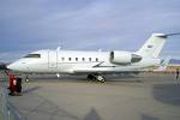 It’s springtime in Antarctica, and for the hundreds of researchers and support staff stationed there, it’s the time when annual re-supply flights arrive, bringing much of the food, clothing, and scientific supplies that are critical for operations. But before those flights can begin, an FAA Aviation Systems Standards team must go in and certify the navaids that help pilots land their aircraft on the icy airfields at the National Science Foundation’s McMurdo Station – America’s primary Antarctic research center – and other South Pole outposts. In the past, those crews have hitched a ride on military C-130 transport planes. This year, however, the agency made history by flying a fully equipped FAA Challenger 601 to the South Pole, and conducting the entire flight inspection on its own. “The cost of a C-130 is way more than one of the FAA jets,” said mission pilot Bill Geiser. “Secondly, whenever we used a C-130, it takes an airplane away from doing its primary mission of supplying the South Pole.”
It’s springtime in Antarctica, and for the hundreds of researchers and support staff stationed there, it’s the time when annual re-supply flights arrive, bringing much of the food, clothing, and scientific supplies that are critical for operations. But before those flights can begin, an FAA Aviation Systems Standards team must go in and certify the navaids that help pilots land their aircraft on the icy airfields at the National Science Foundation’s McMurdo Station – America’s primary Antarctic research center – and other South Pole outposts. In the past, those crews have hitched a ride on military C-130 transport planes. This year, however, the agency made history by flying a fully equipped FAA Challenger 601 to the South Pole, and conducting the entire flight inspection on its own. “The cost of a C-130 is way more than one of the FAA jets,” said mission pilot Bill Geiser. “Secondly, whenever we used a C-130, it takes an airplane away from doing its primary mission of supplying the South Pole.”
The first Challenger flight launched on October 18, when Geiser and two other pilots, one mission specialist, one mechanic, and one avionics technician took off from Christchurch, New Zealand, on the last leg of their journey to McMurdo Station. They stayed for a week at McMurdo. With wind chills causing temperatures to plunge as low as -20 degrees Centigrade, maintenance crews worked around the clock using portable military heaters to keep the airplane warm. “We really didn’t want to let the airplane get cold-soaked,” said Geiser, “because when seals get cold, you can run into leaks.”


































